TMP36 analog temperature sensor with Arduino tutorial. The complete guide for DS18B20 digital temperature sensors with Arduino. The output scale factor of the LM35 is 10 mV/°C and it provides an output voltage of 250 mV at 25°C (see Figure below). LM35 output voltage in mV versus temperature. Note that the sensor operates on a voltage range.. The Arduino Code for Interfacing the LM35 Temperature Sensor is very simple and easy to understand. We just need to read the analog data out of the sensor and convert it to temperature data. We Initialize our code by defining the pin in which the LM35 Temperature sensor is connected. #define sensor_pin A0 // LM35 is connected to this PIN.
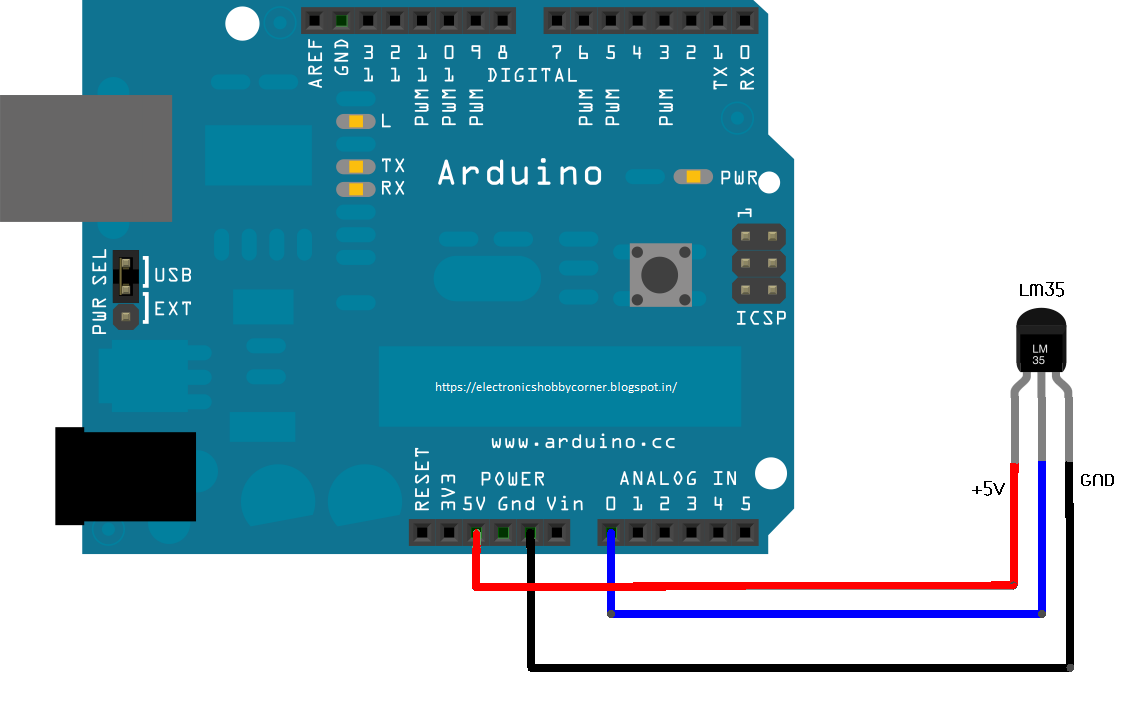
MET LAB LM35 Temperature sensor interface with arduino

Temperature Meter Using LM35 and Arduino uno with I2C LCD Display by technoesolution

LM35 and Arduino Temperature Display using LCDTutorial YouTube
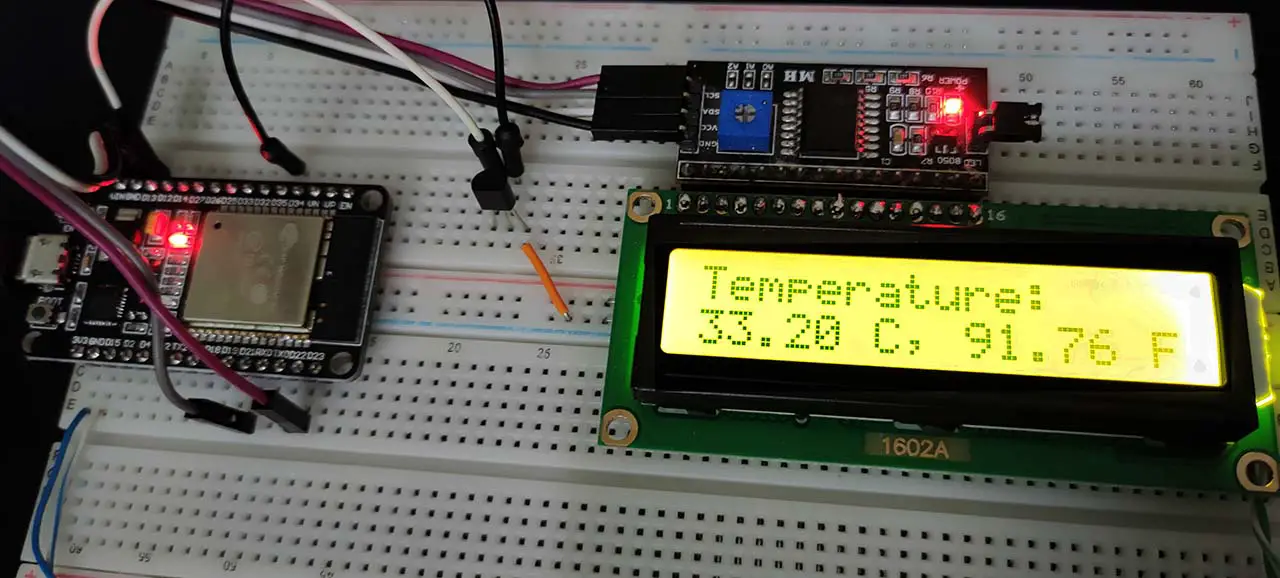
ESP32 Temperature Sensor LM35 Interfacing (in Arduino IDE) ESP8266
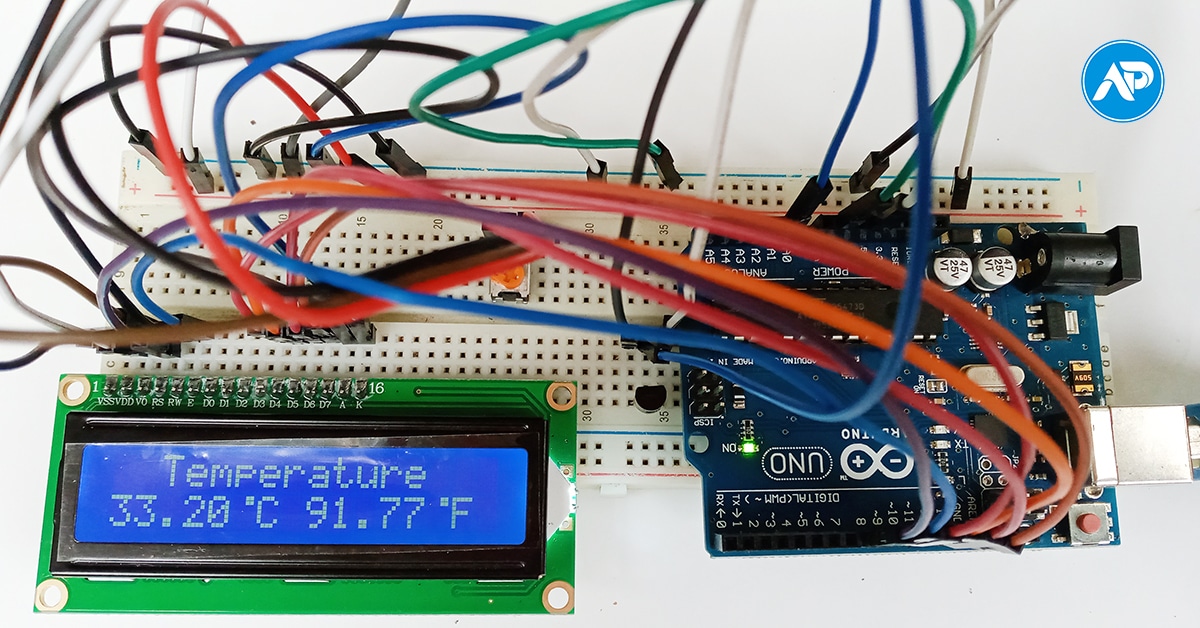
Arduino LM35 Temperature in degrees Celsius and Fahrenheit with LCD

Simulation with Proteus 8 to Scale temperature Using Arduino Uno lm35 sensor with LCD Display
cheaphousetek Freeduino/Arduino + Real Time Clock Sensor Shield + LCD Keypad Shield + LM35

Ham Radio MIPL Arduino Temperature Sensor LM35
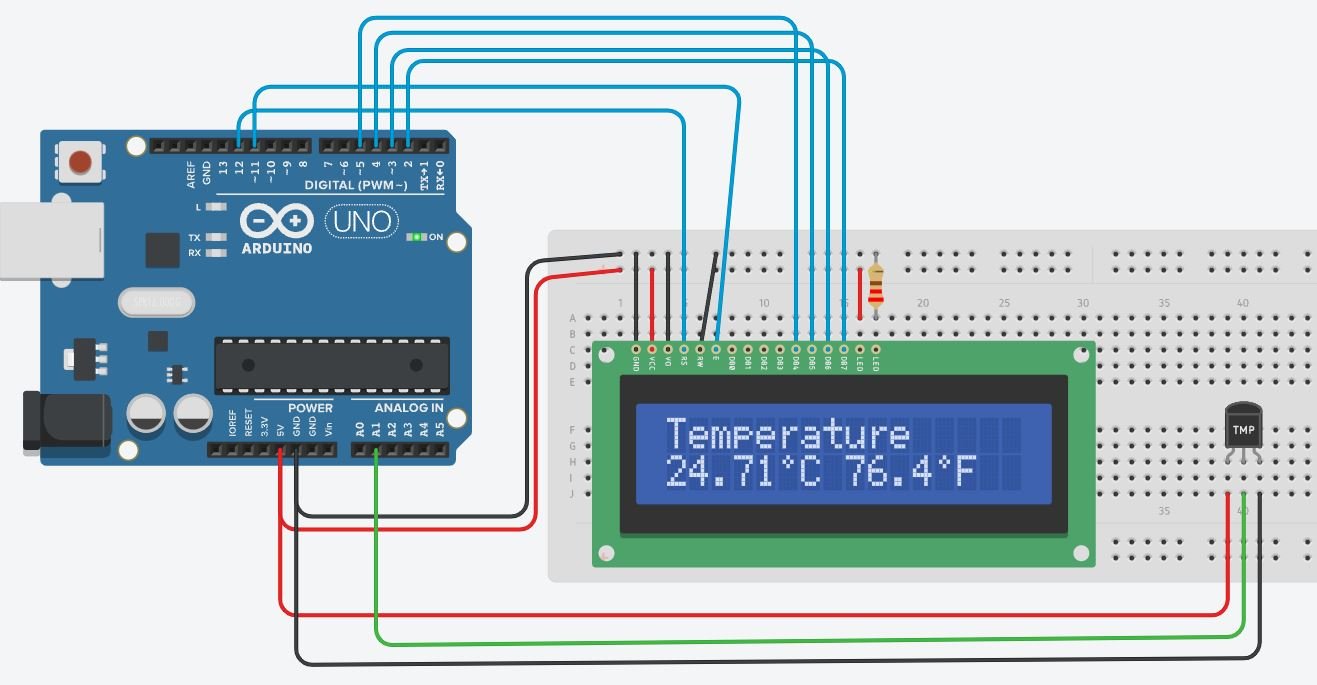
LM35 Temperature Sensor Display On LCD Arduino Tutorial, 40 OFF

Temperature sensor LM35 and Arduino » PIJA Education
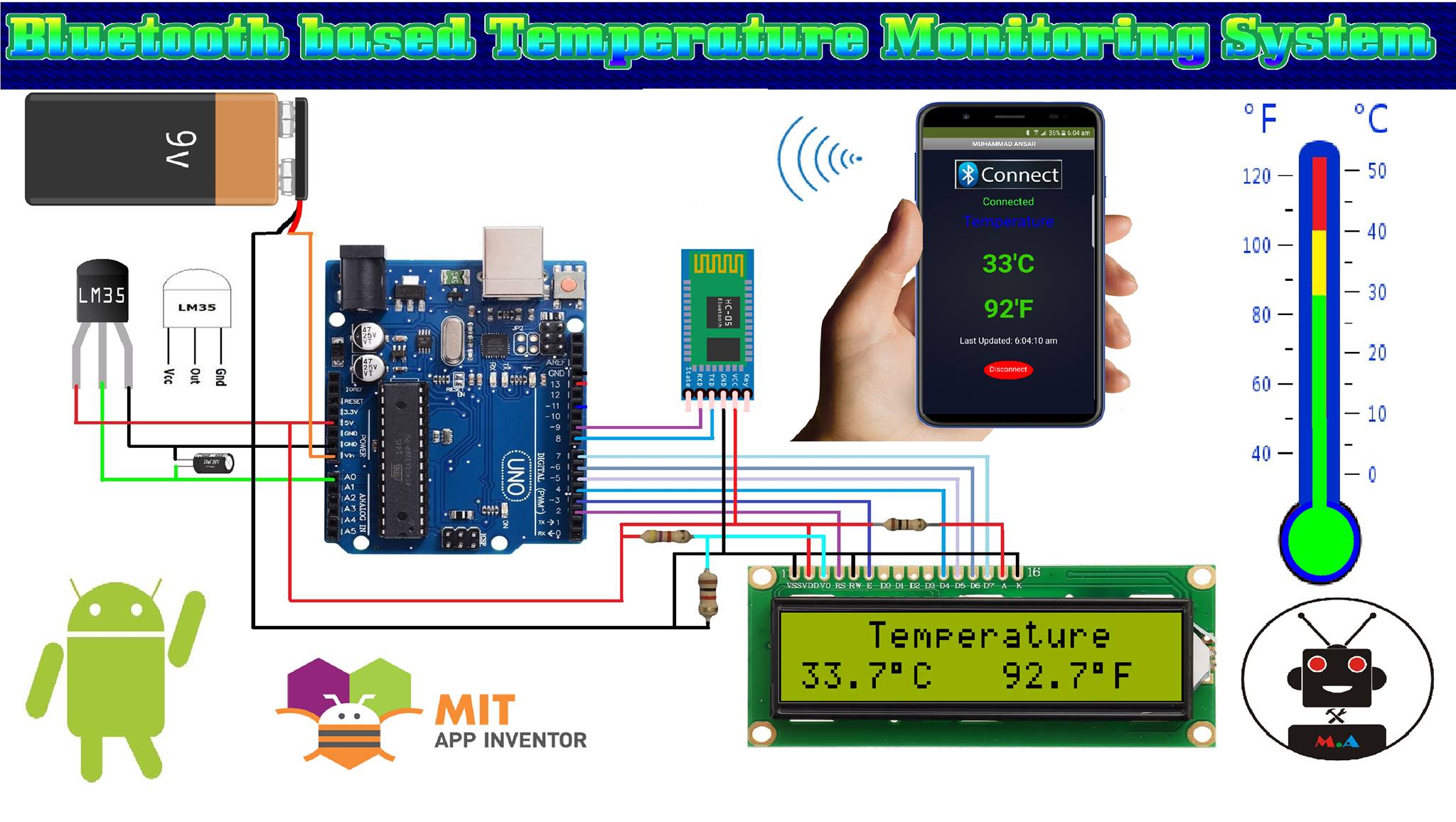
lm35 temperature sensor working principle circuit diagram arduino code projectiot123 is making
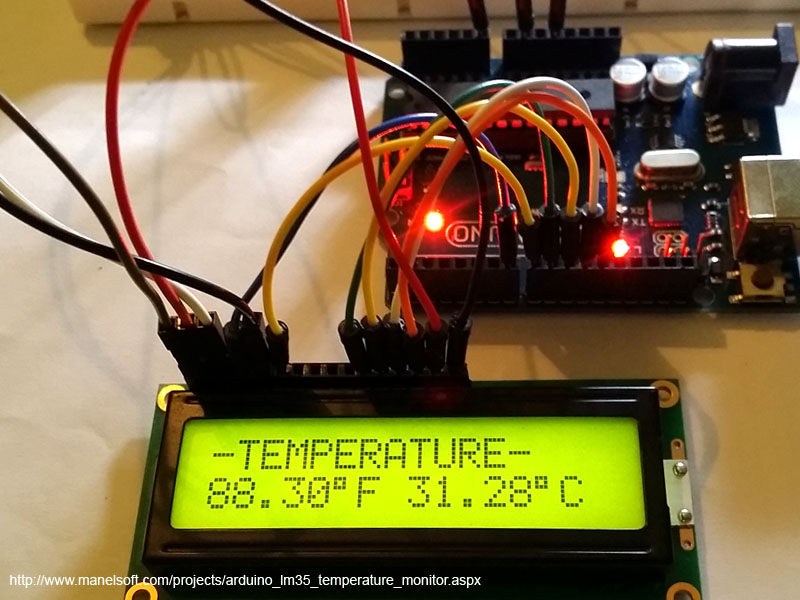
Arduino LM35 Temperature Monitor
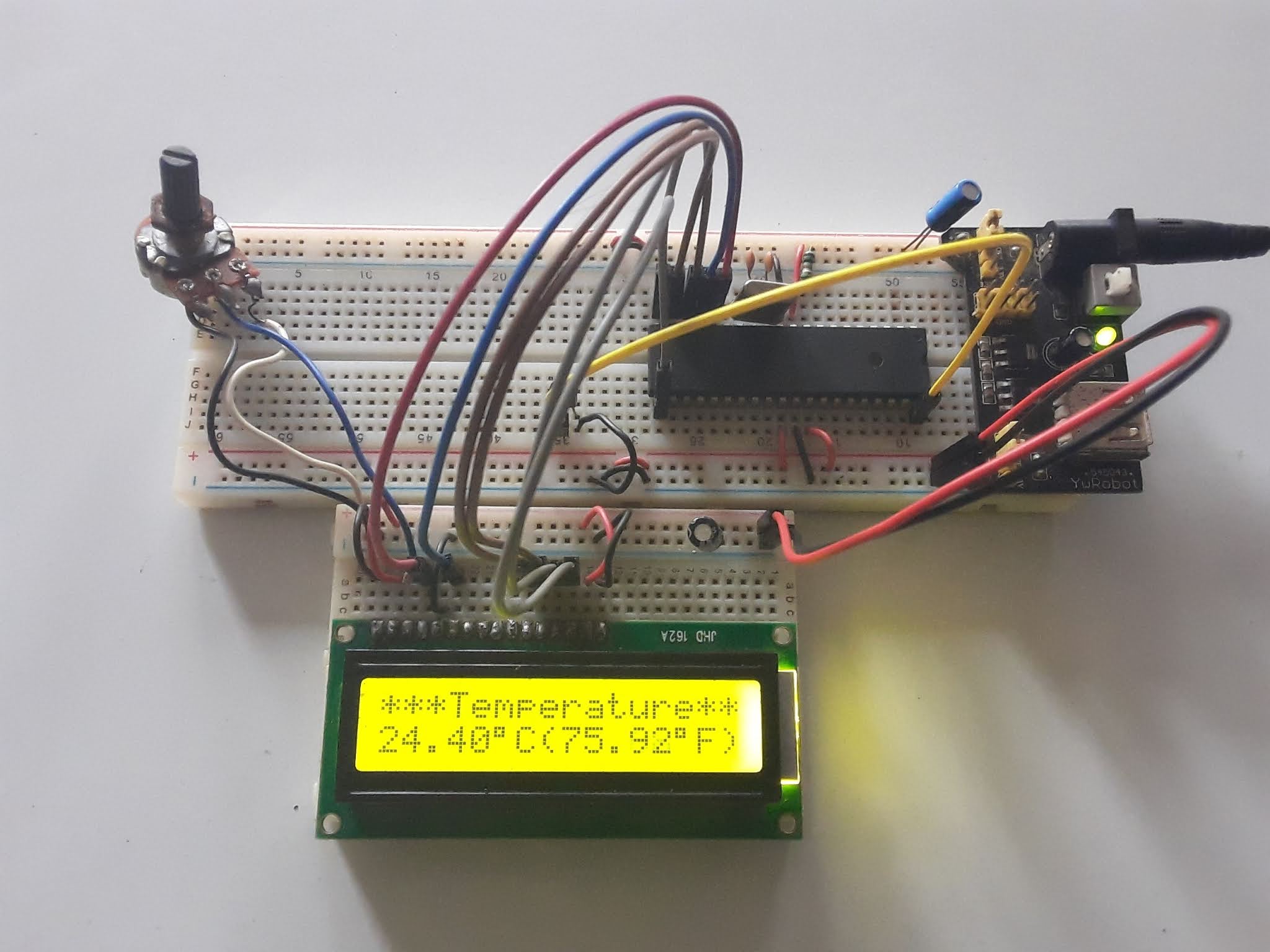
LM35 Temperature Sensor with ATmega32 and LCD eediary
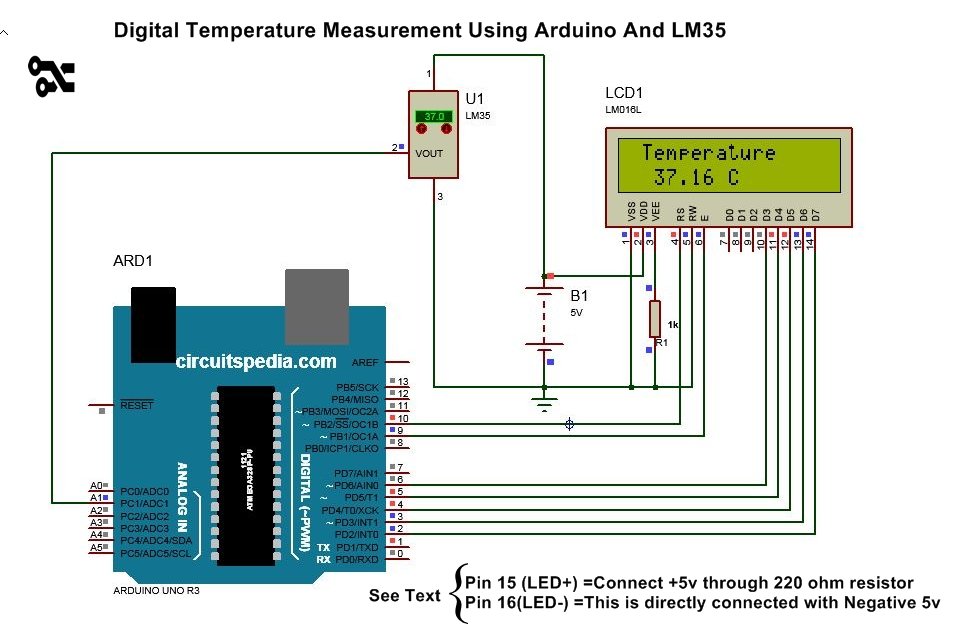
Arduino LM35 Code, Arduino LM35 Temperature Sensor With Lcd Display

Arduino With Ssd1306 Oled Display And Lm35 Temperature Sensor Vrogue

Arduino with temperature sensor Interfacing LCD and LM35

Temperature Sensor in Proteus Using Arduino LM35 Thermistor Proteus Simulation YouTube

Blog Aan Darmawan Temperature Sensor using LM35 and LCD Display on Arduino (Sensor suhu dengan
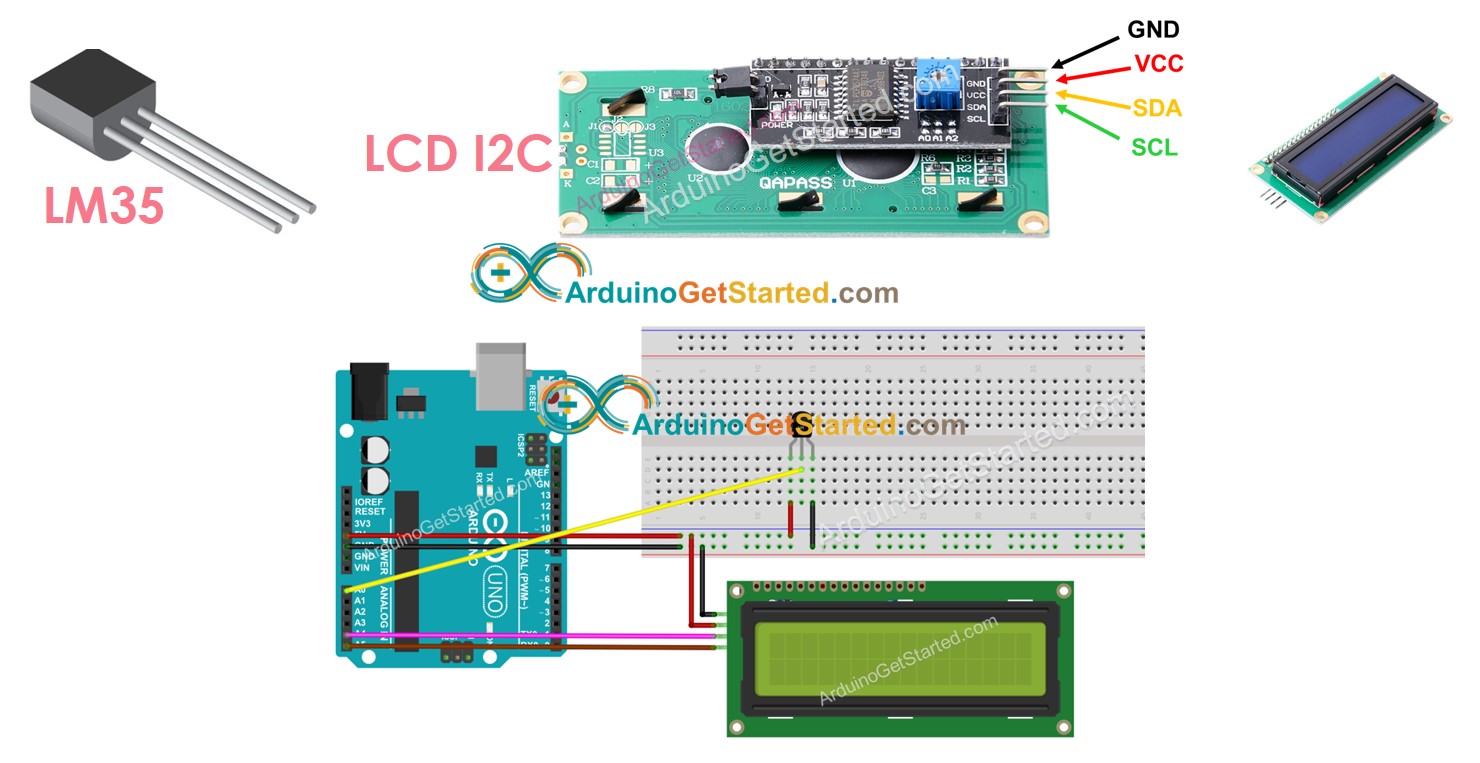
Arduino Display Temperature from LM35 Sensor on LCD Arduino Tutorial

LM35 Temperature sensor using STM32 CONTROLLERSTECH
Interfacing LM35 Temperature Sensor with Arduino & LCD Display. Now let us add a 16×2 I2C LCD Display to the above circuit, so that we can display the LM35 Temperature readings on LCD Screen using the modified Arduino Code. Connect the VCC of the LCD to 5V on the Arduino. Also, connect the GND of the LCD to GND on the Arduino.. Temp granularity of the LM35 changes from 0.5C to a much better 0.1C. Temp readout depends on two things. Output voltage of the LM35. Aref. If Aref goes down by 5%, temp display goes up by 5%. Supply (default Aref) is usually less stable (e.g. USB supply) than the internally generated 1.1volt Aref.